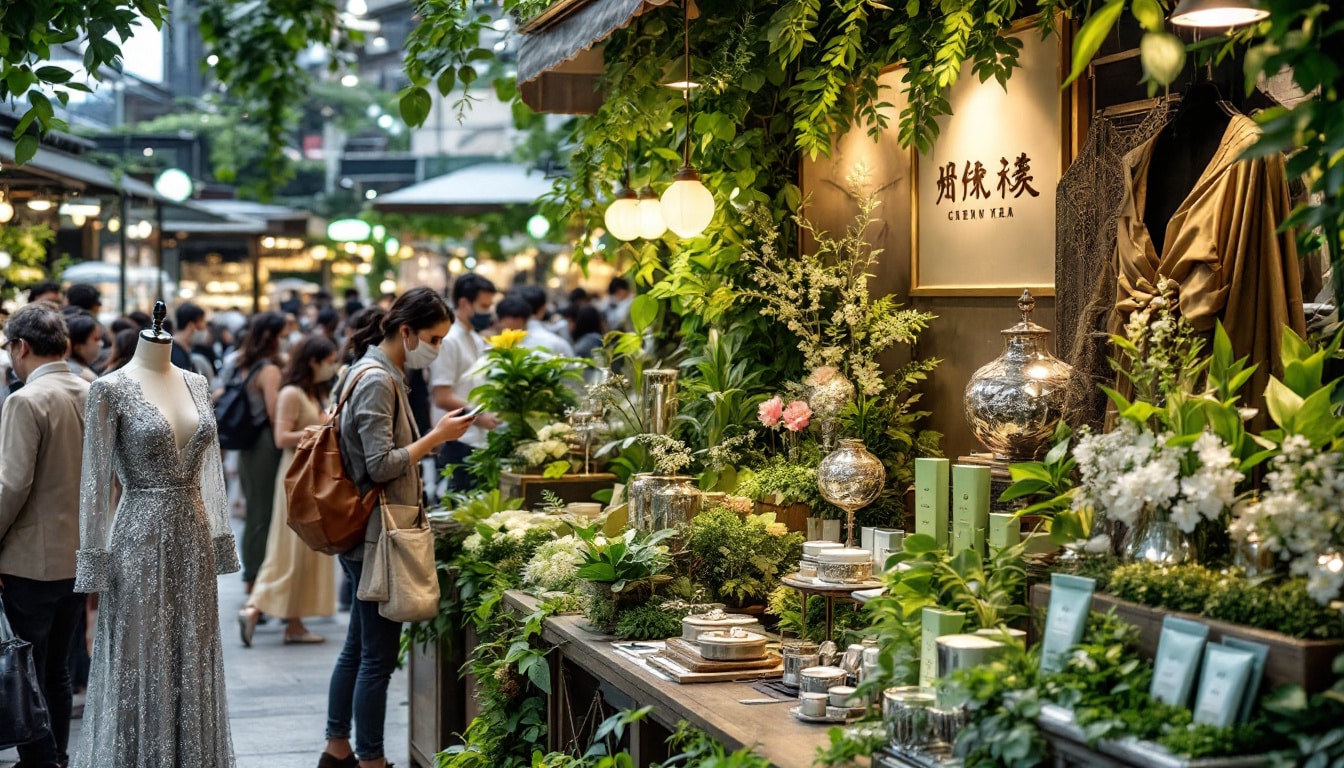Welcome to our digital universe, where every click matters.
Your online experience is carefully shaped by cutting-edge technologies.
We are committed to providing you with relevant and personalized content.
To do this, we use cookies and data to provide and maintain our services. This allows us to monitor interruptions and protect against spam, fraud, and abuse. Moreover, we measure our audience engagement and the statistics of our site to better understand how our services are being used and thus improve them. You also have the option to customize your experience by choosing to accept or refuse the use of certain cookies.

“`html
The Hong Kong fair is one of the most influential trade events in the world, attracting retailers from various sectors. This year, two major trends have come to the forefront: silver and green. These orientations reflect profound changes in consumer expectations and global market dynamics. Let’s explore how retailers capitalize on these trends to stand out and meet growing demands.
Table des matières
ToggleHow are retailers integrating the silver trend into their strategies?
Silver is not just a precious material used in jewelry or electronics; it also symbolizes quality, durability, and luxury. At the Hong Kong fair, many retailers showcased products incorporating silver in innovative ways to attract a clientele seeking exclusivity and added value.
For example, jewelry stores unveiled new collections highlighting sophisticated designs where silver is combined with other noble materials. This approach allows for the creation of unique pieces that stand out in the saturated market. Furthermore, silver is often perceived as a safe investment, which reinforces consumer confidence in their purchases.
Meanwhile, the electronics sector has adopted silver for its antibacterial properties, thus responding to a growing demand for hygienic and safe products. Smartphones, kitchen accessories, and medical devices incorporating silver offer additional benefits, increasing their appeal to health-conscious consumers.
Retailers also leverage the symbolism of silver by associating their brands with philanthropic or ecological initiatives, thus enhancing their brand image. This strategy not only attracts customers but also creates lasting loyalty by aligning company values with those of consumers.
Finally, innovation is at the heart of integrating silver into products. Retailers are investing in research and development to discover new applications for silver, thus opening unexplored markets and creating opportunities for continuous growth.
How does the green trend influence retailers’ choices?
The green trend has become essential in retail, pushing companies to adopt more sustainable and environmentally friendly practices. At the Hong Kong fair, this orientation is manifested by a multitude of initiatives aimed at reducing the ecological footprint of products and sales processes.
Modern consumers are increasingly aware of the environmental impact of their purchases. In response, retailers are highlighting eco-responsible products made from recycled or renewable materials. For instance, fashion brands are showcasing collections utilizing organic or recycled textiles, attracting a clientele concerned with sustainable fashion.
Moreover, eco-friendly packaging has become a key criterion in purchasing decisions. Retailers are investing in biodegradable or reusable packaging solutions, thus minimizing waste and responding to the expectations of demanding consumers regarding sustainability.
Green logistics also represent a key area where retailers are making progress. By optimizing supply chains to reduce carbon emissions, companies demonstrate their commitment to a greener future. Some retailers collaborate with certified eco-friendly suppliers, ensuring that each step of production meets strict environmental standards.
Additionally, the circular economy is gaining importance, encouraging retailers to adopt sales models based on recycling and reuse. This includes initiatives such as taking back used products or setting up repair programs, prolonging product lifespan and reducing the need for new resources.
Finally, transparent communication about ecological practices is essential. Retailers use labels and certifications to inform consumers about their sustainability efforts. This transparency builds trust and encourages customers to favor brands that share their environmental values.
What benefits do consumers gain from these trends?
The adoption of silver and green trends by retailers offers numerous benefits to consumers, ranging from product quality to an increased awareness of the ecological impact of their purchases.
By choosing products that incorporate silver, consumers benefit from durable and aesthetically pleasing items. Silver, known for its longevity and resistance to oxidation, ensures that products remain in good condition longer, thus offering better value for money. Additionally, the antibacterial properties of silver in certain electronic or household products enhance the user experience by adding a layer of health security.
The green trend also brings significant advantages. Eco-friendly products allow consumers to reduce their carbon footprint and actively participate in environmental protection. By opting for biodegradable packaging or items made from recycled materials, they directly contribute to waste reduction and the preservation of natural resources.
Another major advantage is the satisfaction of supporting responsible companies. Consumers appreciate knowing that their purchases support sustainable and ethical practices, thus strengthening their sense of positive contribution to society. This emotional connection with the brand fosters long-term loyalty and a more rewarding shopping experience.
Moreover, the innovation associated with these trends translates into a greater diversity of products in the market. Retailers, by investing in new technologies and materials, continually offer more varied options tailored to consumers’ specific needs. This diversity allows customers to find products that perfectly match their style, functionality, and personal values.
Finally, green initiatives and the use of silver enhance the perception of quality and reliability of products. Consumers are more inclined to invest in items they perceive to be of better quality and having a longer lifespan, reducing the need for frequent replacements and promoting more thoughtful consumption.
What challenges do retailers face in adopting these trends?
Adopting the silver and green trends brings many benefits, but also presents several challenges for retailers. One of the main obstacles is the high initial cost associated with implementing sustainable practices and integrating silver into products.
Silver materials, while precious, are often more expensive than traditional alternatives. This increase in cost can impact the final price of products, making it more difficult to compete in a market that is often very price-sensitive. Furthermore, green initiatives require investments in new technologies, environmentally friendly production processes, and certifications, which can represent a significant financial burden, especially for small and medium enterprises.
Another major challenge is the need to change mindsets and practices within the company. Integrating sustainable initiatives involves revising supply chains, training staff, and often a change in organizational culture. This transition can be complex and resisted by some teams, requiring strong leadership and a clear vision to succeed.
The complexity of environmental regulations also constitutes an obstacle. Retailers must navigate a constantly evolving regulatory landscape, which can complicate compliance and lead to additional costs related to implementing the required standards. The variability of regulations from one country to another adds a layer of complexity for businesses operating on an international scale.
Moreover, effectively communicating green initiatives without being accused of “greenwashing” represents a significant challenge. Consumers are increasingly informed and skeptical of environmental claims. Retailers must therefore ensure that their practices are authentic and verifiable, which requires total transparency and rigorous documentation.
Finally, maintaining a balance between sustainability and innovation remains a delicate task. Retailers must constantly innovate to meet consumer expectations while remaining true to their ecological commitments. This requires fine resource management and the ability to anticipate future trends to stay relevant in the market.
What are the economic impacts of these trends at the Hong Kong fair?
The integration of the silver and green trends at the Hong Kong fair has significant economic repercussions for both retailers and the local and global economy.
Locally
“`








